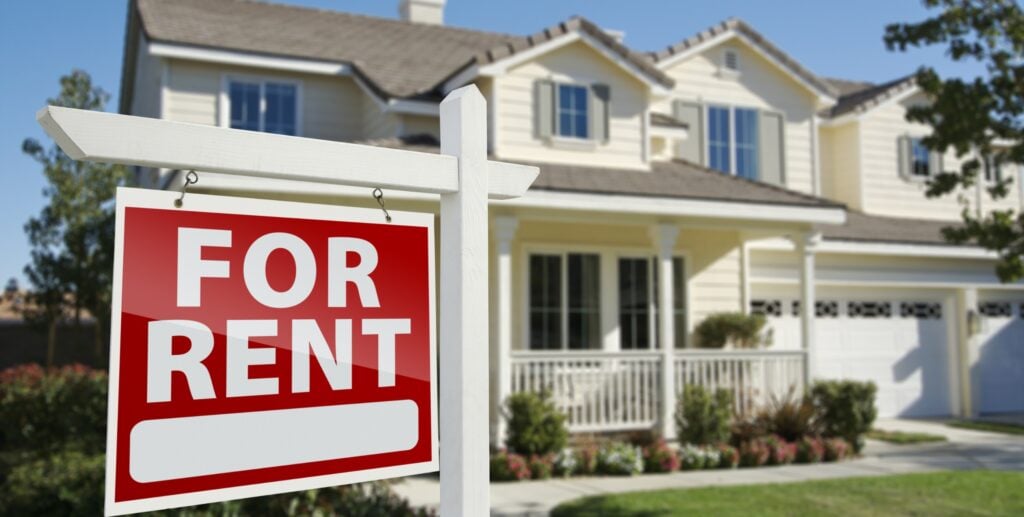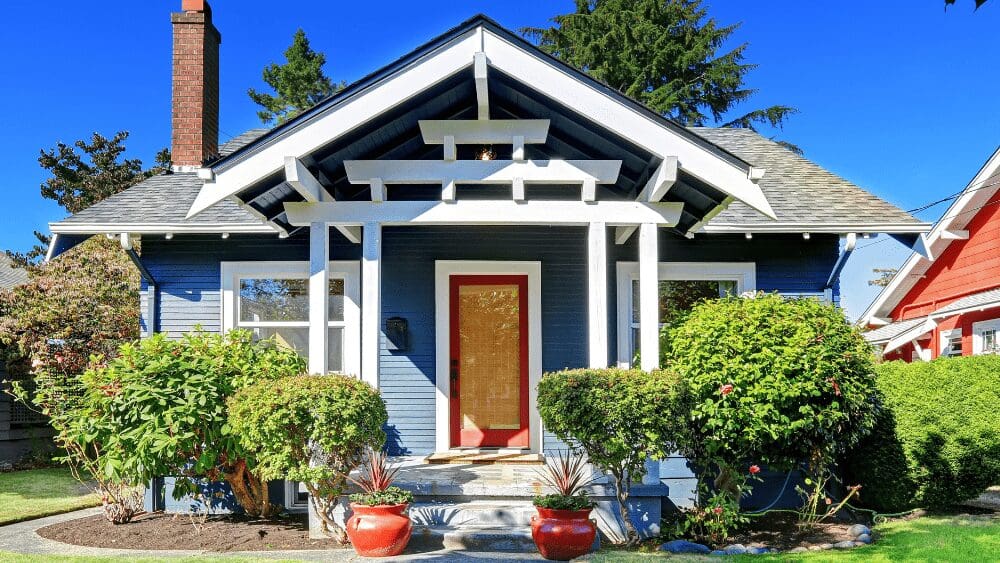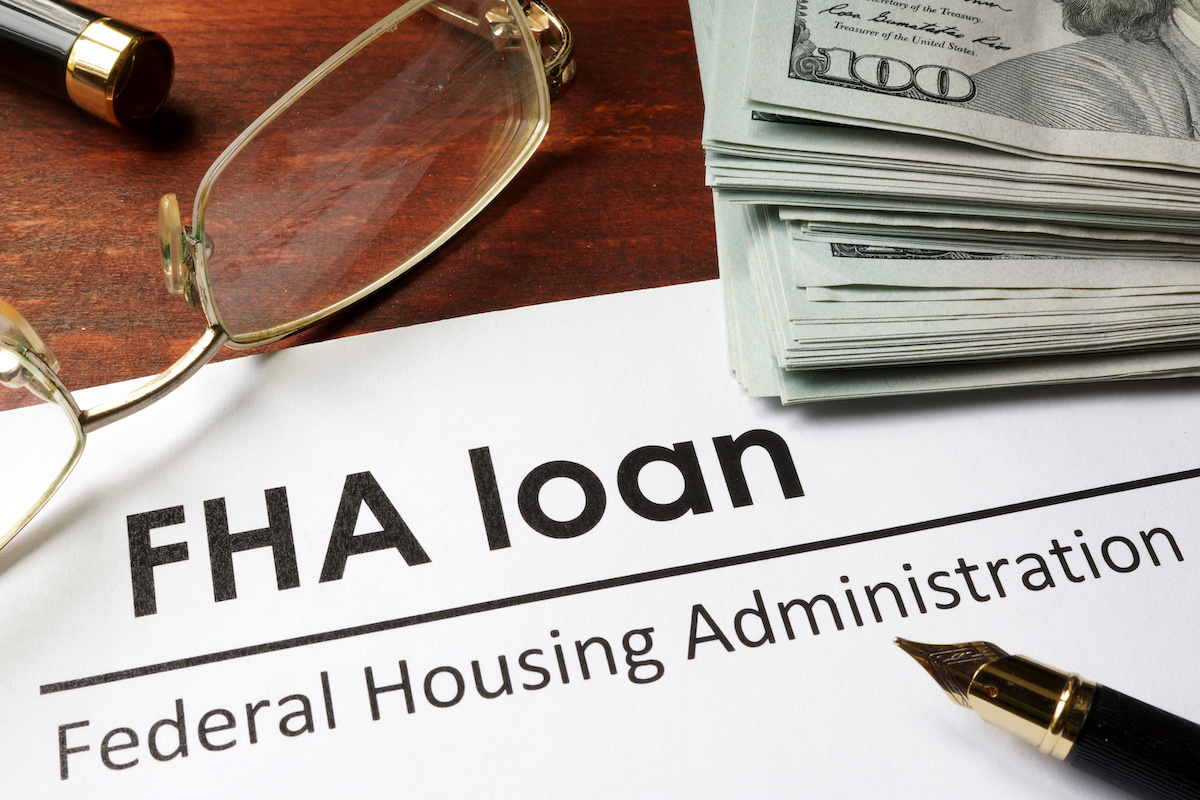Across continents, the dream of homeownership is colliding with a harsh new reality: the escalating impact of climate change.
What was once a sound investment is becoming a precarious gamble in a growing number of regions. From submerged coastal villages, to fire-ravaged landscapes, the global property market is witnessing the emergence of ‘climate abandonment zones’ — geographic areas where climate change is driving residents from their homes.
The global property industry is witnessing the emergence of ‘climate abandonment zones’. Picture: Getty
Mortgage lenders, once focused on credit scores and income, are now scrutinising climate risk with unprecedented detail, with many institutions pulling back due to the growing threat of floods and fires. And this ripple effect is seeing homeowners facing unaffordable insurance premiums or outright policy cancellations.
However, it’s not all doom and gloom. A powerful wave of innovation is sweeping across the sector, driving new approaches to building, insuring, and planning for a more climate-resilient future. From pioneering architectural designs to cutting-edge climate technology, here’s how the market is beginning to adapt to a warming world.
Building smarter: The rise of climate-adaptive architecture
We're past the point of asking IF climate change will impact the way we live. The urgent reality of a changing climate is rapidly driving the rise of climate-adaptive architecture, a dynamic approach that moves beyond static design to create buildings capable of intelligently responding to environmental shifts.
Extreme weather is a reality, and architecture has begun to adapt. Picture: Getty
This isn't just about 'green building'; it's about engineering structures that can actively adjust to conditions like extreme temperatures, shifting weather patterns, and even rising sea levels.
“The era of building without considering climate impacts is over,” ESG Strategy chief executive and sustainability professional with 20 years experience Lee Stewart said.
“Architects and developers worldwide are integrating climate-resilient design principles from inception, shifting focus from merely mitigating damage to actively adapting structures to withstand future environmental impacts.
The wildfires in Los Angeles earlier this year are just one example of increasing need for climate resistant housing. Picture: Getty
“In regions prone to wildfires, such as California or parts of Southern Europe, this means designing homes with fire-resistant materials like concrete, steel, and fire-rated external claddings."
In these fire-prone areas, ember-proof vents, non-combustible landscaping, and defensible spaces around properties were already becoming standard, Mr Stewart said.
"In intensely hot climates, passive design is paramount: optimal building orientation, deep eaves for shading, cross-ventilation, highly insulated walls and roofs, and even green roofs or reflective coatings to reduce heat absorption and drastically lower cooling costs.”
He said in areas where flooding was common – such as in the Netherlands and Bangladesh – other measures were needed.
Areas vulnerable to flooding require homes with design elements to prevent inundation. Picture: Getty
"Elevated foundations, sacrificial lower levels designed to be flooded without structural damage and materials impervious to water are increasingly common," he said.
"Innovative designs include homes on stilts that allow water to pass harmlessly underneath, or structures with integrated flood vents to prevent catastrophic pressure build-up."
Adaptive architecture isn’t just a smart investment anymore, it’s quickly becoming a baseline requirement if you want to access insurance at all.
“These designs are not just about survival – they’re about creating more comfortable, energy-efficient, and ultimately, more insurable homes,” Mr Stewart said.
“For banks and insurers, the appeal of these designs is clear: properties built with these protective features make them more stable investments because they’re less likely to suffer significant damage from extreme weather.”
Adaptive architecture is quickly becoming a baseline requirement if you want to access insurance at all. Picture: Getty
Tech for resilience: Smart home innovations
The convergence of climate science, artificial intelligence and technology is ushering in a new era of home tech to help provide innovative solutions for property resilience and sustainability.
Intelligent building platforms leverage technology to optimise building operations and reduce energy consumption, directly contributing to climate change mitigation efforts.
Avani Solutions is company that provides sustainability and carbon reduction solutions for the real estate industry, and its chief executive Nicolette Maury said these platforms gave owners control over their energy use and "respond dynamically to weather, occupancy, and grid signals".
“This not only cuts emissions but makes buildings more financially resilient, reducing exposure to peak energy costs, grid instability, and carbon liabilities," Ms Maury said.
Intelligent building platforms leverage technology to contribute to climate change mitigation efforts. Picture: Getty
Empowering property owners to monitor and manage energy usage, these platforms integrate various building systems, optimising heating and cooling and even detecting potential hazards such as leaks or unusual temperatures. Advanced sensors can track everything from indoor air quality to water consumption, promoting resource efficiency.
Beyond individual homes, PropTech (Property Technology) solutions are empowering urban planners and developers with AI-driven data analytics and simulation tools to design smarter, more resilient communities.
“We see three key shifts underway: smarter design, smarter retrofits and smarter operations,” Ms Maury said.
“It’s tempting to focus on flashy new builds, but the real opportunity is in making existing buildings smarter and more resilient.
“We're already working with large portfolios in Australia to retrofit buildings with active energy controls. These upgrades go beyond sensors — they connect HVAC and lighting systems directly to the grid and onsite renewables, creating real-time flexibility. Retrofits that add intelligence and control can lift performance fast. That’s what makes a building more defensible in a changing climate and more attractive to investors too.”
Rethinking risk: New insurance models and data-driven strategies
The traditional insurance model, which was reliant on historical data, is now struggling to keep pace with the unprecedented frequency and intensity of climate-related disasters. In response, the insurance industry is undergoing a significant transformation, embracing advanced data analytics, predictive modelling and AI to better assess and price premiums.
“Traditional insurance models have struggled to keep up with the increasing frequency and intensity of climate-related events,” Pearl Lemon Properties head of property investment Charles Whitehead said.
“This challenge is pushing the industry to adopt more data-driven strategies.”
Advanced data analytics and predictive modelling are becoming key to assessing climate risk more accurately. Insurers are developing sophisticated platforms which can identify localised climate trends and forecast the likelihood of future events down to individual property addresses.
This allows for more accurate risk assessment and, crucially, empowers homeowners with specific information about their vulnerabilities and coverage options.
Technology solutions are empowering urban planners and developers with AI-driven data analytics and simulation tools to design smarter, more resilient communities. Picture: Getty
“I also think the rise in parametric insurance solutions is of special interest,” continued Mr Whitehead. “These metrics-based policies, which pay based on pre-established parameters of wind speeds or rainfall levels, do away with the need for extensive damage surveys and hasten the recovery process after a disaster has occurred.”
There's also a growing global push for ‘risk reduction’ incentives whereby insurers might offer lower premiums to homeowners who invest in resilience measures, such as installing fire-resistant roofing or elevating critical electrical systems. This paradigm shift moves towards a more proactive, rather than purely reactive, approach to climate risk management.
“These shifts represent a significant move toward a more proactive and data-orientated approach to managing climate risk,” Mr Whitehead said. “As the industry continues to evolve, these innovations lay the ground for a more sustainable homeowner and insurance future.”
Planning for change: Managed retreat and community-wide adaptation
While technological and architectural innovations can protect many properties, some regions face risks so severe that long-term habitation may become unfeasible.
This leads to the complex, and often contentious (but increasingly necessary) concept of ‘managed retreat.’ This is not about forced evictions, but rather a coordinated, voluntary process to permanently relocate people and assets away from areas deemed critically vulnerable to climate hazards.
“Climate resilience is now core to any property investment strategy,” said Rethink Group founder and chief executive Scott O'Neill.
“Managed retreat highlights the need to consider not just location, but longterm liveability and regulatory outlook. And as risks become clearer, investors are moving capital into safer growth corridors: areas designed with better infrastructure, sustainable construction and lower climate exposure.”
Some regions face risks so severe that long-term habitation may become unfeasible. Picture: Getty
Alongside managed retreat, there's a growing international focus on broader community-level adaptation, including building protective infrastructure including seawalls and levees, restoring natural barriers such as wetlands and mangroves, and implementing strict new building codes and zoning laws that account for future climate projections.
“Adaptability adds value,” commented Mr O’Neil.
“New builds in lower-risk areas offer more than compliance, they provide future rental appeal, lower operating costs, and resilience against environmental disruption. Property investors are now assessing climate overlays, zoning changes, and government policy direction as standard practice, factoring in not just yield, but future security.”
Globally, governments and communities are grappling with how to facilitate such transitions. And while the challenges are immense, this burgeoning wave of innovation, coupled with a growing global understanding of climate risks, offers a pathway forward.



















 English (US) ·
English (US) ·